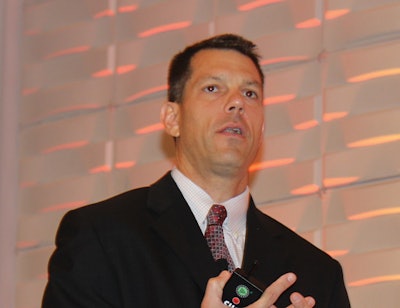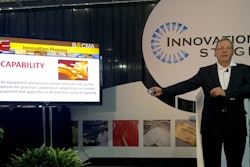
Launched by PMMI in early 2011, The Alliance for Innovation and Operational Excellence brings together leading CPG companies and other key stakeholders—suppliers, associations, academia—in an effort to improve overall supply chain operations. Within AIOE are seven Communities of Practice. One of these is Workforce Development, a group that is about to release what it calls “The Engagement Framework.” It’s essentially a playbook on how to create the conditions and the culture to engage employees whose contributions improve the bottom line by driving operational efficiency and performance.
The importance of employee engagement is laid out quite persuasively in Gallup’s 2012 State of the American Workplace Report: “Engaged employees work with passion and feel a profound connection to their company. They drive innovation and move the organization forward.” The same report tells us that only 30% of American workers are engaged and 52% are not engaged. The remaining 18% are actively disengaged.
“Gallup has a very good reputation for really digging deep into such issues,” says Greg Flickinger, VP of Manufacturing at Charlotte, NC-based snack food manufacturer Snyder’s-Lance. “Their report has been a primary reference for us,” adds Flickinger, who heads up AIOE’s Workforce Development efforts. We talked with him recently to get a better idea of what we can expect to see in the Engagement Framework that AIOE is preparing to release.
Packaging World:
In addition to the Gallup report, you mentioned research by Towers Watson suggesting that only 17% of employees with high engagement are high retention risks compared to 58% of disengaged employees. Do such statistics reflect your own experience and that of the AIOE group you work with?
Greg Flickinger:
Absolutely. In the process of building out this framework, many in our group described experiences where employees become so engaged that their organization kind of becomes the fabric of themselves. They literally take so much pride in their organization that they often identify themselves by it. This becomes especially true in what we call the advanced organization, which really represents a high-performance work system. P&G has been known for creating these, and I had the opportunity to lead such a system while at General Mills before coming to Snyder’s-Lance. Members of our Workforce Development group also have firsthand experience leading high performance work systems during their careers. When you look at these types of work systems, that’s where you see very low turnover because people are not only highly engaged, but vested in the culture. It all really boils down to people feeling that their contributions are valued by the organization and that they have a voice that will be heard.
What is the typical turnover rate in manufacturing and how do highly engaged manufacturing plants compare?
The average turnover rate in the U.S. is about 10%. One of the members of our engagement development team led a plant where turnover was down around 4%. Why? Because the teams truly owned the process from top to bottom. The leadership team is salaried, but everyone else in the building are hourly associates. The team literally runs the facility on a day to day basis. The culture of engagement is so strong that turnover is practically nonexistent. In fact, the plant doesn’t even have a time clock. People track their own hours and turn them in.
There’s kind of a rah rah aspect to this engagement business if you know what I mean. How do you get past that part of it and get employees to take this seriously?
What you can’t do is just talk about it. What you have to do as a leader is create an inclusive environment. You need to create teams and projects where you pull people into contributing who maybe in the past didn’t have input. If people are asked to participate in a project effort, just asking for their input and contribution makes them feel valued. The next thing you know, their level of engagement will start to kick up another notch. Sustaining and growing this spark of engagement hinges upon follow-up and action. As leaders it is about creating positive and engaging experiences for our associates. Their experiences shape their beliefs and then actions and results will follow.
Can you provide an example?
A great example is when I first arrived in Charlotte, which was about six years ago. There was an associate named Mike in material handling who admitted to me, after he went through his own engagement transformation, that all he’d been doing is punching in and simply doing the bare minimum to get through his eight hour shift. Then he was invited into a project to help support performance improvement in the receiving area. It was a comprehensive effort to improve everything from safety, to performance, to how the team wanted to structure their work environment. Mike began to contribute his ideas and drive visible improvement. He engaged his entire peer group in the effort, since they now felt that their ideas were being heard. He was not only coming to the leadership team with ideas, but was rapidly implementing changes to improve the work environment and increase efficiency for the entire department. Mike became fully engaged and became a passionate advocate at the peer level, driving tremendous change within the department. It’s a perfect example of how you can ignite discretionary effort by authentically pulling a person into a project effort. You are essentially telling them they are important by showing them they are valued. When their ideas and solutions begin to get implemented, the next thing you know they’re looking for new opportunities to improve things that maybe they’ve lived with for years but just never had a voice they could use to change them.
Another example from within Snyder’s-Lance was when we relocated a previously acquired cookie manufacturing operation to the Charlotte site. We decided we would create a high-performance work structure, allowing the hourly associate team to take full ownership of the business. The associates managed all aspects of the operation including: daily scheduling, production, maintenance, quality, sanitation, and shipping. We hand-picked the first five people for this team based upon the leadership capability they had exhibited. Those five were then responsible for hiring the rest of the team that would work alongside them as peers in this new work system. Empowering the associates to truly own the business has led to incredible operational performance that far exceeded expectation. Now five years into production, that plant not only has never had a lost-time accident, it’s never even had an OHSA recordable accident. Six people out of that plant have been promoted to salaried leadership or coordinator roles in other departments on the site. By building a work system and culture that fully engaged the associates, business performance has been enhanced well beyond what a traditional structure may have accomplished. Even more important, it has allowed people the opportunity to grow their skills, resulting in significant promotion and career growth opportunities.
























